
Reflecting on Learning Dispatches from Room 101
About the Model. Professor Graham Gibbs published his Reflective Cycle in his 1988 book " Learning by Doing ." It's particularly useful for helping people learn from situations that they experience regularly, especially when these don't go well. Gibbs' cycle is shown below.

Gibbs Model of Reflection Robert Murray
Gibbs' reflective cycle 16 Graham Gibbs (1988) adapted the experiential learning cycle to acknowledge the importance of feelings and emotion in learning: It is from the feelings and thought emerging from this reflection that generalisations or concepts can be generated. And it is generalisations or concepts that allow

Gibbs' Reflective Learning Cycle HELEN MARTIN BLOG
Gibbs' Reflective Cycle is one of the most well known cyclical models used in professional reflective practice . It guides practitioners through an experience in six stages: description, feelings, evaluation, analysis, conclusion, and action plan. Gibbs Reflective Cycle was originally developed for use in higher education as a way for.
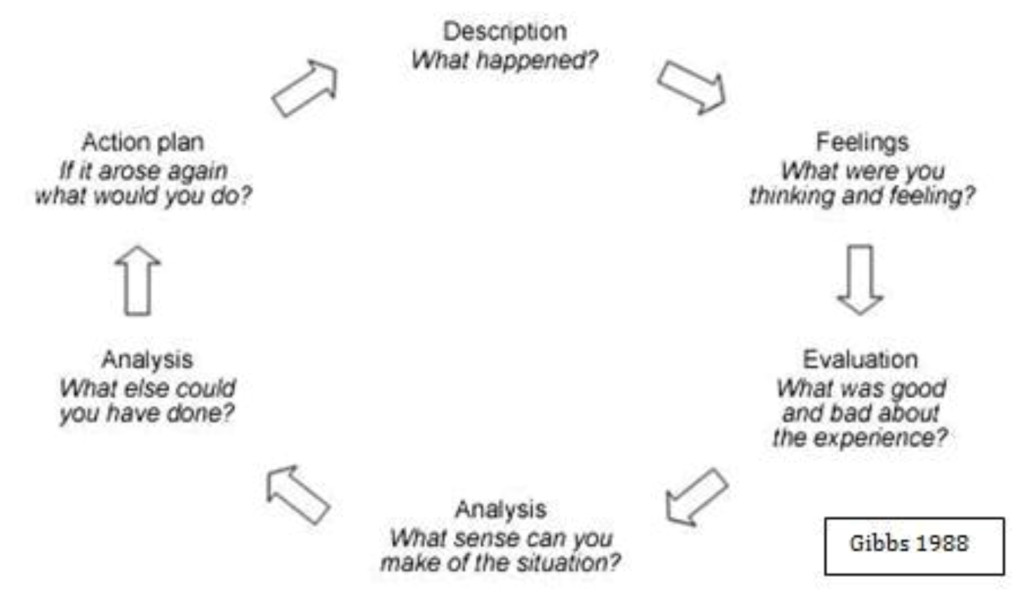
Gibbs Reflective Model Template williamsonga.us
Overview. Gibbs' Reflective Cycle was developed by Graham Gibbs in 1988 to give structure to learning from experiences. It offers a framework for examining experiences, and given its cyclic nature lends itself particularly well to repeated experiences, allowing you to learn and plan from things that either went well or didn't go well.
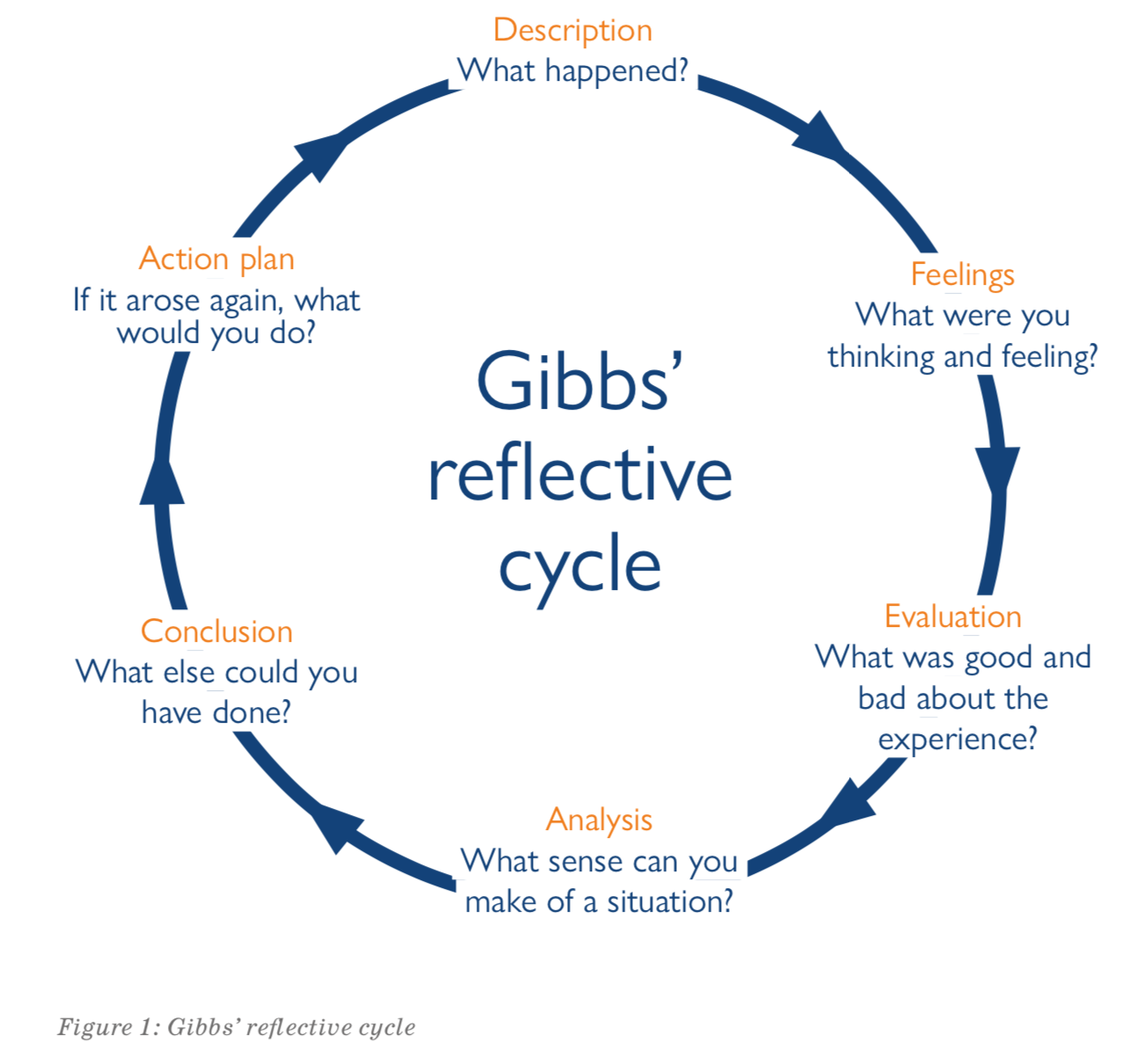
Reflection means more than keeping a diary SoR
Figure 4 Gibb's reflective cycle (Adapted from Dye, 2011) Gibb's model acknowledges that your personal feelings influence the situation and how you have begun to reflect on it. It builds on Boud's model by breaking down reflection into evaluation of the events and analysis and there is a clear link between the learning that has happened.
Reflective Practices Cycle (Adapted from Gibbs, 1988) Download
The Gibbs Reflective Cycle is a systematic process that individuals and teams can use to reflect upon and learn from their experiences at work. Originally put forth by Professor Graham Gibbs in his 1988 book, Learn by Doing, the Gibbs Reflective Cycle is a step-by-step approach to analyzing and understanding the complexities of workplace.
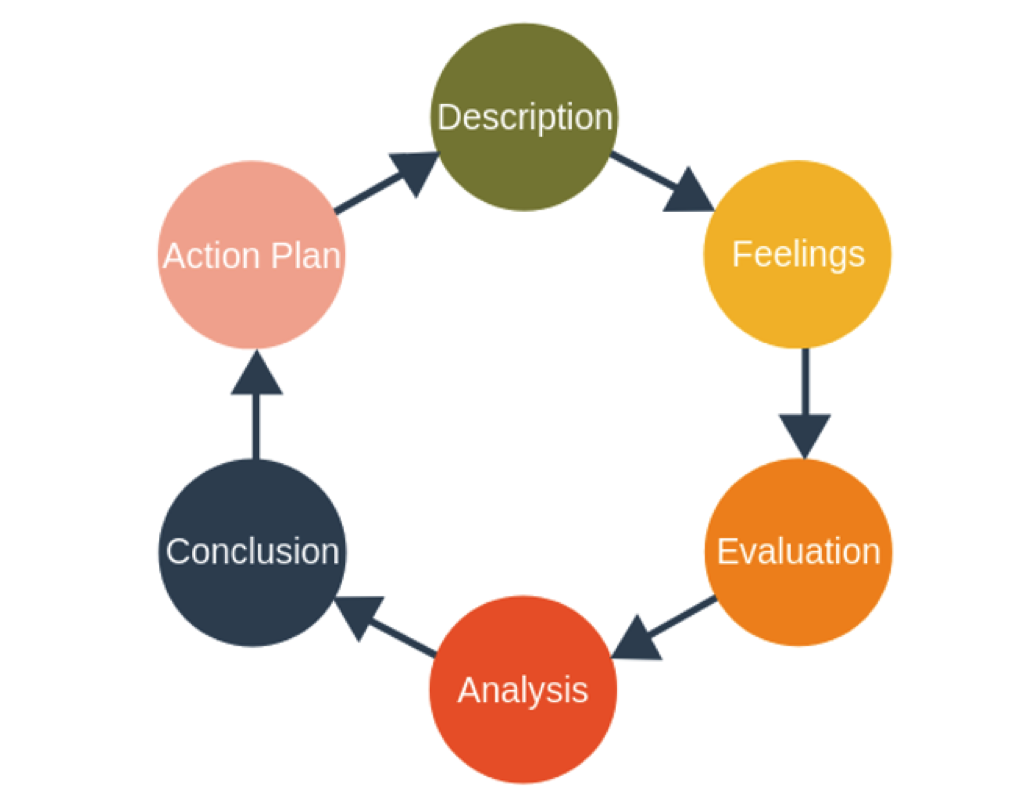
C1 Training Course → Gibbs Reflective Cycle Traffir
In this video, we explained Gibbs' Reflective Cycle - a structured framework for reflective practice that is widely used in healthcare, education, and social.

Gibbs' Reflective Cycle Source Gibbs (1988) Download Scientific Diagram
Key Points. Graham Gibbs published his Reflective Cycle in 1988. There are five stages in the cycle: Description. Feelings. Evaluation. Conclusions. Action. You can use it to help team members think about how they deal with situations, so that they can understand what they did wel and where they need to improve.

Gibbs Reflective Cycle Sam James Life Coach Norfolk
The Gibbs' Reflective Cycle is a Tool that helps professionals Grow and Learn from their past Experiences. Consists of 6 Repetitive Steps that must be repeated until getting the desired Results: Description: Describe in detail the Situation in which you want to improve. Feelings: Reflect on How you Felt in that Situation, How you Coped with it.
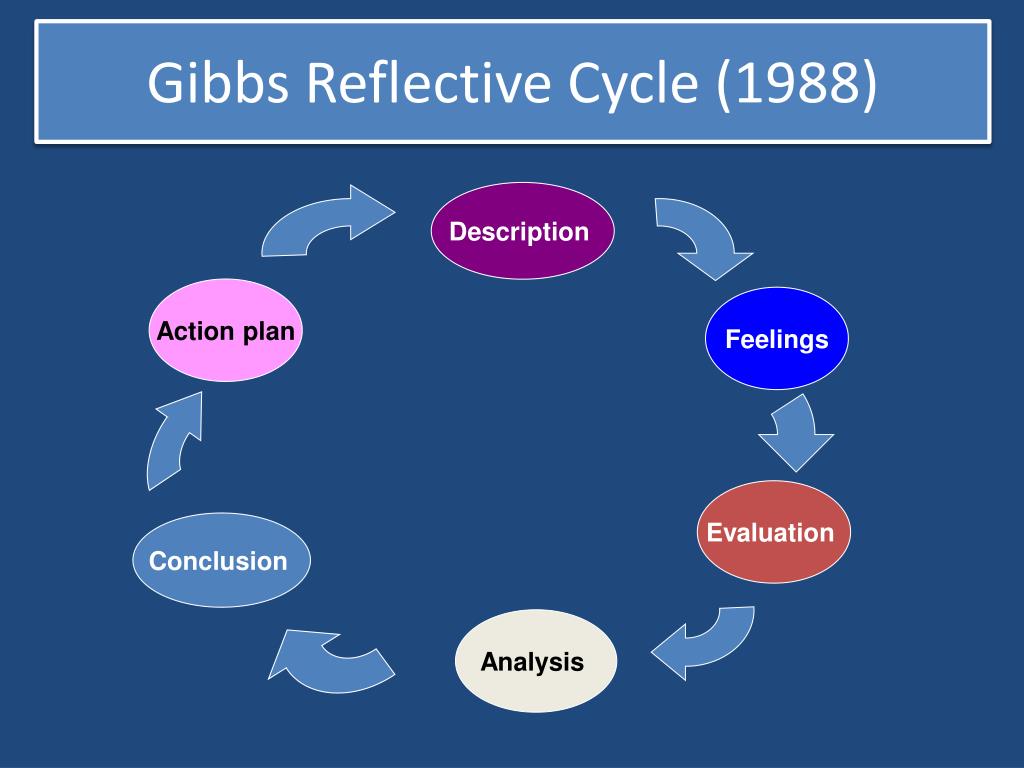
How Do You Write A Gibbs Reflective Cycle
The Gibbs Reflective Cycle starts at Description and then continues clockwise to Feelings, Evaluation, Analysis, Conclusion and ends at Action plan, to finally return to Description. Here the Gibbs reflective cycle is complete. Figure 1 - the steps of the Gibbs Reflective Cycle. The various steps are explained in more detail below:

Gibb’s Reflective Cycle Sarah Stewart's Eportfolio
Gibbs Reflective Cycle - A Practical Guide. Matthew Channell. November 14, 2023. Understanding and leveraging the Gibbs Reflective Cycle is crucial in the quest to become an impactful leader. This powerful tool offers a structured approach to personal and professional growth through reflective practice, enabling leaders to transform.
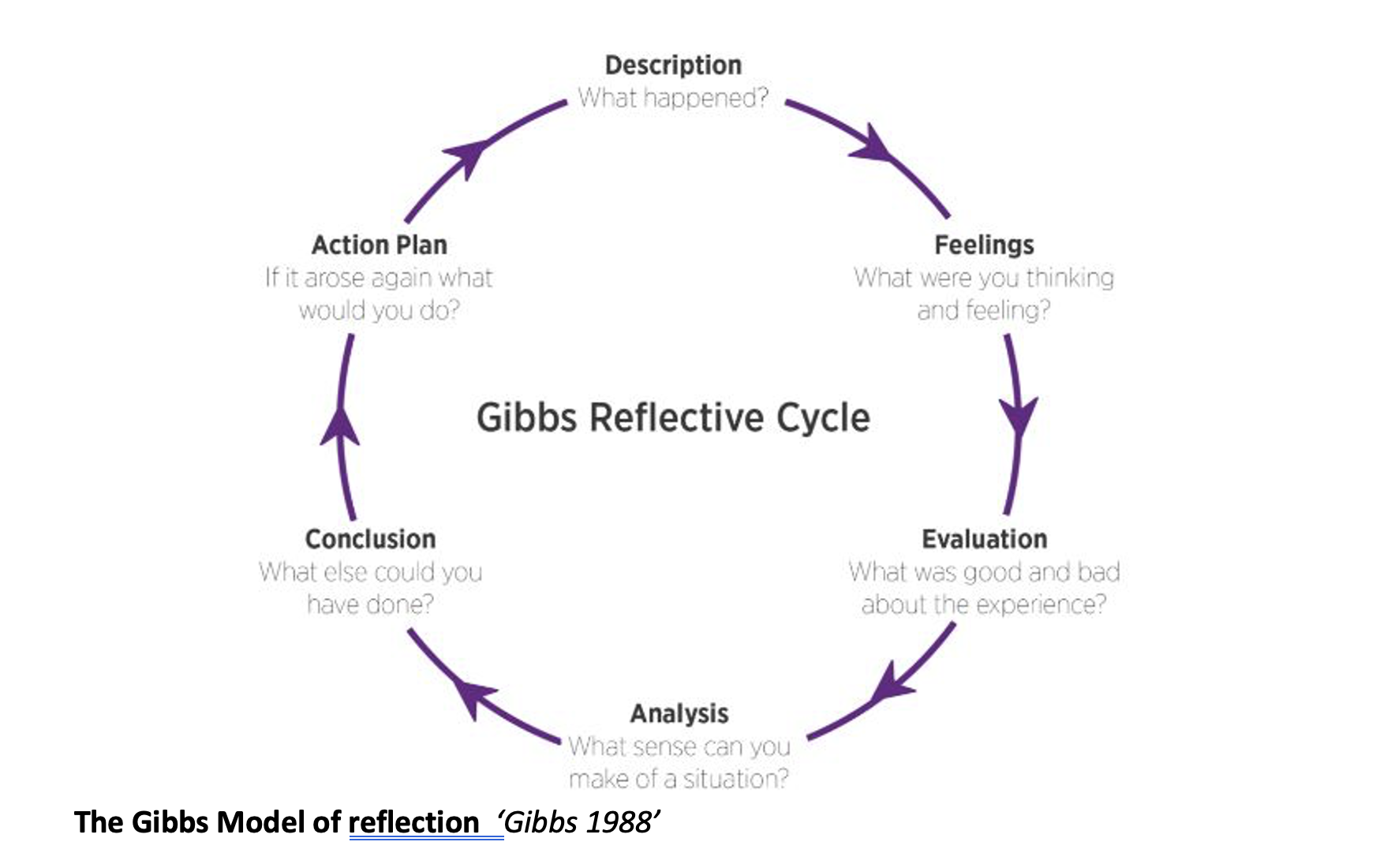
How to apply Gibbs Model of Reflection Association of MBAs
Gibbs Reflective Cycle Model. Other models, such as Gibbs' Reflective Cycle Model (Table 3) from the literature of teacher education, include more stages—"Description," "Feelings," "Evaluation," "Analysis," "Conclusion," and "Action Plan"—and provide guiding questions to foster a more complete reflection . Even with.
Gibbs' Reflective Learning Cycle [22] Download Scientific Diagram
Gibbs' Reflective Cycle. Similar to Kolb's Learning Cycle, Gibbs (1988) Reflective Cycle also provides a structure for a reflective essay. The structure of a piece of reflective writing, whether it be an essay or learning log entry, might consist of six components or paragraphs that follow Gibb's cycle:

Your Essential Guide to Gibbs Reflective Cycle
Gibbs' reflective cycle, was originally devised for nursing, but - like Rolfe's model of reflection - has become popular across many disciplines, and is widely applied as a prominent model of reflective practice. More resources can be found on Gibb's Reflective Cycle here. The Six Stages of Gibbs' Reflective Cycle
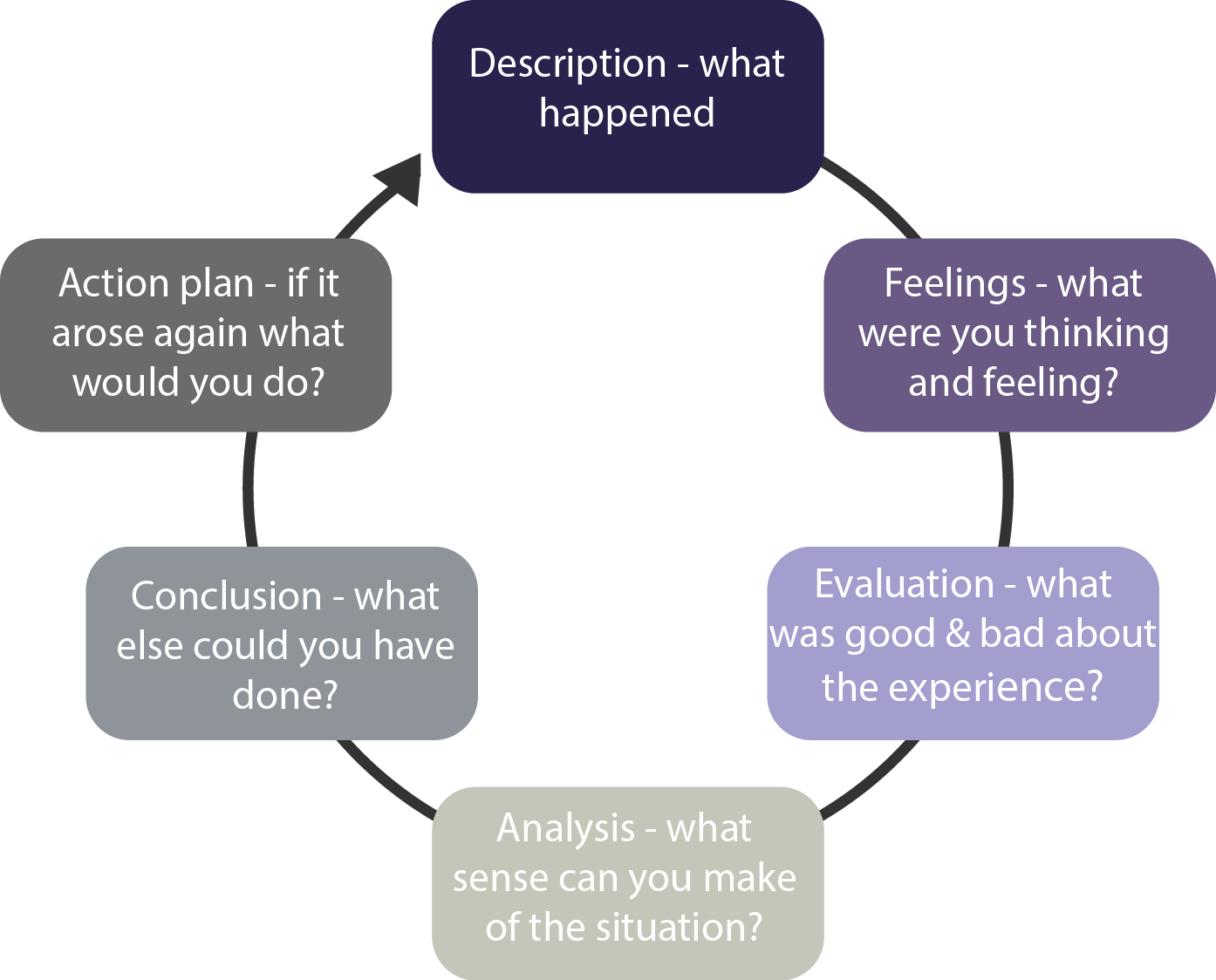
The value of reflective practice for partnership brokers The
Gibbs' reflective cycle Gibbs (1988, p.49) created his "structured debriefing" to support experiential learning. It was designed as a continuous cycle of improvement for a repeated experience but can also be used to reflect on a standalone experience. One of the key things about Gibbs is

Learning through Reflection
Gibbs' reflective cycle was developed by Dr. Graham Gibbs in 1988 - a research leader in the Department of Behavioral and Social Sciences at the University of Huddersfield. Gibbs' reflective cycle is a framework giving structure to the process of learning from experience through six stages: description, feelings, evaluation, analysis, conclusions, and action plan.